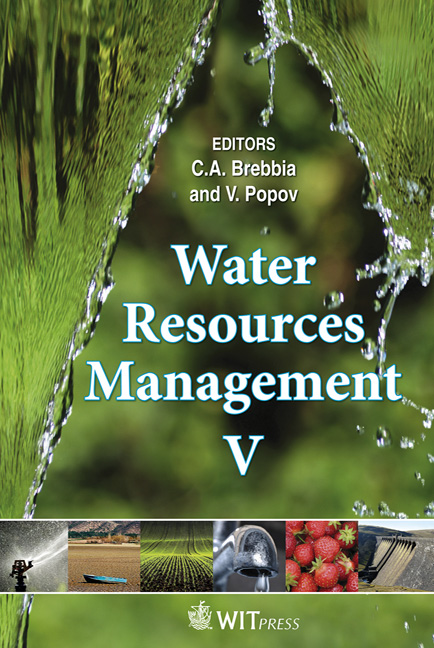Extending The Use Of Thermal Furrows For Irrigation Purposes
Price
Free (open access)
Transaction
Volume
125
Pages
11
Page Range
553 - 563
Published
2009
Size
478 kb
Paper DOI
10.2495/WRM090491
Copyright
WIT Press
Author(s)
St. Popescu, E. Chiorescu, N. Marcoie, C. Bofu & A. Popia
Abstract
Over the last decade the researchers have investigated solutions with original ideas for the development of land improvement by using geothermal water energy in Romania, and to extend therewith the usual vegetation period. Some of these solutions use thermal furrows, lined with impervious, heat-conductive plastic sheets interlaced between the crop rows, whose role is to heat the soil and the ambient air in the early spring and late autumn. The present paper investigates the possibility of employing horizontal thermal furrows over the whole crop-growing period as well as irrigation furrows. To this purpose, such a furrow should be obturated in a downstream section and then supplied with irrigation water of adequate quality. In a lined furrow, infiltration occurs along the furrow only on the perimeter situated above the upper edges of the plastic lining. The technical parameters of the lined furrow (value of the inflow, depth of the water and furrow length, shape of the section and distance between furrows) have been found by simultaneously considering two performance criteria: the maximization of field-watering effectiveness and the uniformity coefficient. As the resulting infiltration flow shows neither significant variation during the irrigation time, nor a dependence on the base level of the infiltrating water layer, the regime of flow in the furrow may be considered permanent, gradually varied, with a uniformly distributed discharge. Consequently, without any important additional investment, the thermal furrows can be used effectively as irrigation furrows, too. Keywords: lined thermal furrows, irrigation furrows, zero gradient, permanent and gradually varied flow.
Keywords
lined thermal furrows, irrigation furrows, zero gradient, permanent and gradually varied flow





